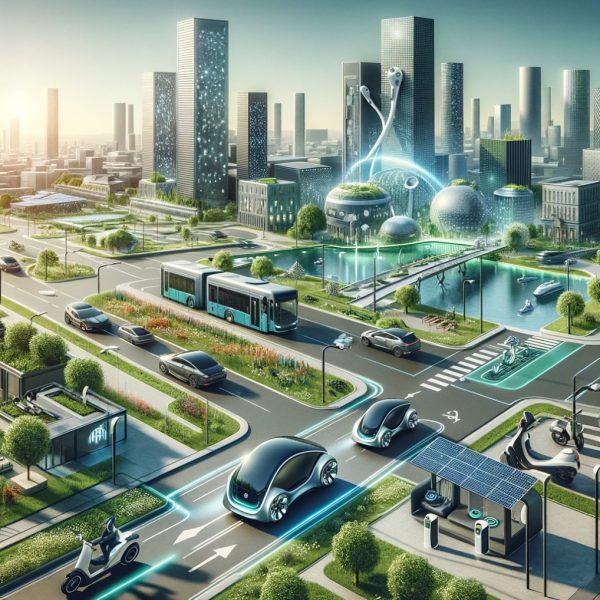Ather energy vs ola electric vs hero electric vs simple energy vs tvs vs bajaj
March 9, 2024
Industry: Electric Vehicle
Subject: Startups

The Indian electric two-wheeler market is witnessing a fierce competition among Ather Energy, Ola Electric, Hero Electric, Simple Energy, TVS, and Bajaj. While Ather and Ola focus on the premium and technology-driven segments, Hero Electric and TVS appeal to a broader market with their range of products and brand trust. Simple Energy is a promising newcomer with its focus on performance, whereas Bajaj capitalizes on nostalgia and design. The evolving consumer preferences, government policies, and technological advancements will shape the future dynamics of this competition, with each player having its strengths and challenges. The race to electrification is not just about who leads in sales but also about who drives innovation, customer satisfaction, and sustainability in the long run.
In the rapidly evolving Indian electric two-wheeler market, the competition among leading companies such as Ather Energy, Ola Electric, Hero Electric, Simple Energy, TVS Motor Company, and Bajaj Auto has intensified. Each brand has its unique strategy, strengths, and focus areas, catering to various segments of the market. Let’s dive into a detailed analysis comparing these companies across different dimensions such as product offerings, technology, market strategies, and challenges.
Product Offerings and Technology
- Ather Energy is known for its premium scooters, the Ather 450X and 450 Plus, emphasizing performance, smart connectivity features, and a sleek design. Ather’s use of proprietary technology in battery management and vehicle software sets it apart.
- Ola Electric made headlines with its Ola S1 and S1 Pro models, boasting impressive range, speed, and features like a large touch screen and connected features. Ola’s aggressive pricing and large-scale manufacturing ambitions highlight its strategy to dominate the market.
- Hero Electric has focused on catering to the mass market with a range of affordable models. As one of the earliest entrants into the Indian electric two-wheeler space, Hero Electric has established a strong network and brand trust.
- Simple Energy is a newer entrant, focusing on high-performance electric scooters like the Simple One. It claims superior range and speed, targeting tech-savvy consumers looking for cutting-edge technology and performance.
- TVS Motor Company entered the electric scooter market with the iQube, which offers a balance of performance, features, and reliability. TVS leverages its extensive experience in the traditional two-wheeler market to appeal to a broad audience.
- Bajaj Auto reintroduced the iconic Chetak in an electric avatar, focusing on premium design and build quality. The Chetak Electric combines retro design with modern features, targeting consumers looking for style and sustainability.
Market Strategies
- Ather Energy has been expanding its retail footprint and charging infrastructure, the Ather Grid, aiming to enhance customer experience and convenience. Its focus on community building and customer engagement through events and rides is noteworthy.
- Ola Electric aims for mass adoption through competitive pricing and has announced plans to set up a vast manufacturing facility, the Ola Futurefactory, which could significantly impact its supply capabilities and cost efficiencies.
- Hero Electric leverages its early mover advantage, wide range of products, and extensive dealer network to maintain its leadership position in volume sales. Its focus on affordable and accessible EVs helps in addressing a larger market segment.
- Simple Energy is focusing on a single, high-performance model to make a mark in the premium segment. It aims to differentiate through technology and performance, betting on the growing consumer interest in high-range scooters.
- TVS Motor Company and Bajaj Auto are utilizing their well-established brand presence and distribution networks. They focus on gradual market penetration with a single model, likely testing waters before wider rollout.
Challenges and Opportunities
- Infrastructure and Range Anxiety: All companies face the challenge of range anxiety and the lack of charging infrastructure, though they are adopting different strategies to mitigate these issues, from developing proprietary charging networks to focusing on battery efficiency and swappable technology.
- Market Penetration and Consumer Mindset: The transition from traditional fuel-based vehicles to EVs requires changing consumer mindsets, where companies need to address concerns regarding cost, performance, and convenience.
- Policy and Regulation: Government policies and incentives play a significant role in the EV market’s growth. Companies that can navigate these regulations and capitalize on government incentives can gain a competitive edge.
- Technology and Innovation: As the market grows, continuous innovation in battery technology, vehicle software, and overall customer experience will be key differentiators.
Valuation and Opportunities
As of March 2024, the valuation for Ather Energy is anticipated to be around $2 billion as the company is eyeing an IPO aiming to raise up to $400 million. Ather Energy has established itself as a significant player in India’s electric vehicle market with innovative products and a strong focus on technology and customer experience.
For Ola Electric, the valuation was reported to be between $7 billion and $8 billion ahead of its IPO. Ola Electric has rapidly grown to become a leader in India’s electric two-wheeler market, capturing significant market share with its product offerings and ambitious expansion plans
Current valuations for Hero Electric, Simple Energy, TVS, and Bajaj is not avalable. These companies are also key players in the electric vehicle space in India, with their unique strategies and market positions. Hero Electric has been focusing on the mass market with a wide range of affordable models, Simple Energy is a new entrant emphasizing performance and innovation, while TVS and Bajaj have leveraged their longstanding presence in the two-wheeler industry to venture into electric mobility.








